 Image search results - "tree" Image search results - "tree" |

Kenrokuen is one of Japan's three most famous gardens (besides Korakuen in Okayama and Kairakuen in Mito, Ibaraki). The garden was originally the castle garden for Kanazawa Castle. Katsurazaka Entrance to Kenrokuen Garden 桂坂口
|
|

Kenrokuen is classified as a "kaiyu-shiki teien" (回遊式庭園) or "circular-strolling Japanese garden." It's a common and classic Japanese garden design where you simply walk around the garden, usually around a central pond.
|
|
|

Karasaki Pine Tree in Kenrokuen Garden, Kanazawa, Ishikawa Pref.
|
|
|
|

Ropes are strung over the tree to protect it against the weight of snow.
|
|

Karasaki Pine Tree in Kenrokuen Garden 唐崎松
|
|

Entrance to Kyu-Shiba Rikyu Gardens, a real oasis in an urban jungle. Another waterfront garden with classic Japanese-style elements with a pond, pine trees, rocks, and stone lanterns.
|
|

The Karasaki Pine Tree is the garden's largest pine tree.
|
|

Kyu-Shiba-rikyu was first built in the 17th century and used as the residence of a number of nobles. Purchased from the Arisugawa family in 1875 by the Imperial Household Agency which made it the Shiba Detached Palace.
|
|

Karasaki Pine Tree in Kenrokuen Garden, Kanazawa, Ishikawa Pref.
|
|

Bird's eye view of Kyu-Shiba Rikyu Gardens as seen from Hamamatsu World Trade Center
|
|
|
|

The buildings were destroyed in the Kanto Earthquake in 1923 and the property was donated to Tokyo in 1924 to commemorate the start of Emperor Showa's reign.
|
|
|

Horai island 蓬莱島
|
|
|
|

Trail to Hossawa Falls
|
|

Pine trees and pond
|
|

Trail to Hossawa Falls is very lush
|
|
|
|

Beware of falling rocks
|
|

Minowa-bashi Station platform for departing trains
|
|

Shopping street near Takaoka Station
|
|

Neagari-no-matsu Pine tree with rising roots. 根上松
|
|
|

It's a short trail, but very nature-rich
|
|

Route map with numerous stations
|
|

Neagari-no-matsu Pine tree with rising roots. 根上松
|
|
|
|

Trains come quite often and passenger traffic is good.
|
|
|
|

Small river below, fed by the waterfall
|
|

Many flowers adorn the route, especially roses. This one is called Princess Aiko.
|
|
|

Cherry blossoms along the Shakujii River, near Shin-Itabashi Station on the Mita subway line.
|
|

Boundary between Ome city and Hinode-machi town. I was hiking from Mt. Mitake in neighboring Ome.
|
|

Monuments
|
|

Koi carp fish
|
|

This garden is very green. Even the pond is deep green. Kiyosumi Garden is classified as a "kaiyu-shiki teien" (回遊式庭園) or "circular-strolling Japanese garden." It's a common and classic Japanese garden design where you simply walk around the garden, usually around a central pond.
|
|

There are cherries on both sides of the river and a walking path on both sides.
|
|
|
|

Tiny pink flowers
|
|

Bracing a pine tree for winter snow.
|
|

Entrance to one walking path with a poem monument.
|
|

Very close to the summit of Hinode-yama. Only one lodge is here.
|
|

A streetcar arrives Minowa-bashi Station
|
|

Kasumigaike Pond
|
|
|

Many matsu pine trees and many stones.
|
|
|
|

Cherry blossoms near JR Sugamo Station
|
|

Last flight of steps to the summit.
|
|

A streetcar leaves Minowa-bashi Station
|
|

Nakahashi Bridge. During the Takayama Festival, ornate floats cross this bridge. 宮川に掛かる中橋
|
|

Shopping street
|
|

Magnificent tree
|
|

Karasaki Pine Tree
|
|
|
|

Keyaki-dori road with bare zelkova trees.
|
|
|

Stepping stones, called Isowatari, are another major feature of the garden.
|
|
|
|

Destination: Waseda
|
|

Nakahashi Bridge and pine tree
|
|
|

Yukimi Stone Lantern
|
|

A short walk from the Information Center is Area C (C-chiku), a flat area of woods with katakuri flowers in bloom. C地区
|
|

Cherry tree shadow
|
|

Stepping stones, called Isowatari. 磯渡り
|
|

Top of Mt. Hinode-yama
|
|

Inside the streetcar at the front. Pay when you board. 160 yen per ride for any distance.
|
|
|

They even provide a small deck for you to stand on to see the flowers. C地区
|
|

River wall
|
|

Top of Mt. Hinode-yama
|
|

All-day pass available for 400 yen.
|
|
|
|
|

Shakujii River sprinkled with fallen petals.
|
|

Isowatari. 磯渡り
|
|

Benches all over for us to gaze at the panorama.
|
|
|
|

Dry waterfall
|
|

It is getting rarer to see these flowers in Tokyo. Kiyose has an active movement to help preserve and nuture these flowers every year.
|
|

Pleasant walking path.
|
|

Alpine map pointing the way to various areas
|
|
|

Kami Josui Park
|
|

Stone monuments
|
|
|
|
|
|
|
|
|

Mt. Hinode-yama summit has a little picnic pavilion
|
|

Magistrate's living quarters 居宅(嵐山の間)
|
|

Bridge to Nakashima island
|
|

A few bridges cross the river.
|
|

Benches for hikers who had lunch.
|
|

Nakashima island
|
|

A short walk away is Area B which is a wooded slope with the flowers growing wild. B地区
|
|
|
|

Spectacular views from the top of Mt. Hinode-yama, Tokyo. But I couldn't recognize any landmarks.
|
|

The numerous people and trees made it impossible to see the slope itself.
|
|
|

Weeping cherry tree
|
|

Tiny purple flowers on the slope
|
|
|

Views from the top of Mt. Hinode-yama, Tokyo
|
|
|
|

Weeping cherry tree, Koishikawa Korakuen Garden, Tokyo. 枝垂桜
|
|
|

Haiku poems solicited from the public are also displayed along the riverside.
|
|

Views from the top of Mt. Hinode-yama, Tokyo
|
|
|

This weeping cherry tree is about 60 years old.
|
|
|
|
|

Views from the top of Mt. Hinode-yama. The large white building is the Seibu baseball dome in Tokorozawa.
|
|
|
|

Weeping cherry tree, Koishikawa Korakuen Garden, Tokyo.
|
|
|

Bare trees
|
|

Surrounding mountains in pastel colors
|
|

World Trade Center in Hamamatsucho overlooked the garden. World Trade Center Building (世界貿易センタービル) in Hamamatsuchō was a 40-story commercial skyscraper. It was once Japan's tallest building in 1970.The building closed for good on June 30, 2021 and was torn down during Aug. 2021 to March 2023. The building will be replaced with a new World Trade Center building to be completed in March 2027.
|
|

Weeping cherry tree, Koishikawa Korakuen Garden, Tokyo. Called "Shidare-sakura" in Japanese meaning cherry tree with drooping branches.
|
|

Stone lantern
|
|
|

With Tokyo Dome looming above, Koishikawa Korakuen is another famous Edo-Period Japanese garden originally built by Lord Yorifusa of the Mito Tokugawa Clan in 1629 as part of his Edo estate.The garden was completed under Lord Mitsukuni, the second lord of the Mito clan.
|
|
|

Trail to go down
|
|
|

Little park
|
|

Going down
|
|
|
|
|
|
|

次郎弁天の池
|
|

Shorozan hill 小廬山
|
|

Petals
|
|
|

Benten Pond
|
|

Shopping street near Ontakesan Station
|
|
|
|
|
|

The garden is also noted for fall leaves.
|
|

Tokyo Dome in the background. The garden is right next to Tokyo Dome.
|
|

Petals on the ground
|
|
|

Koyo-tei tea ceremony pavilion 紅葉亭
|
|
|
|
|

Paper lantern written with "Itabashi-ku."
|
|
|

Koyo-tei tea ceremony pavilion, available for rent.
|
|

Larger weeping cherry tree.
|
|

Petals and tree roots.
|
|

Lots of steps, glad I was going down instead of up.
|
|

View from Koyo-tei
|
|
|

The little park has a side of an old building on the ground, serving as a stage.
|
|
|
|
|
|

Lots of trees.
|
|

Administrative building which seems to have been part of the Iwasaki villa.
|
|

Weeping cherry tree, Koishikawa Korakuen Garden, Tokyo.
|
|
|

Hill
|
|

Fork in the road. Turned left for the waterfall trail.
|
|

Weeping cherries
|
|
|

Small hill
|
|

Log bridge
|
|

Weeping cherry tree and Tsutenkyo Bridge 通天橋
|
|
|
|

Grass 大芝生
|
|

Pine cone
|
|

Large weeping cherry tree しだれ桜
|
|

Okuno village was here.
|
|
|

Beware of bears...
|
|

Looking up a slope...
|
|
|

Ryotei teahouse 涼亭
|
|

Finally a waterfall
|
|

It's also when some street performers start to sing.
|
|

More waterfalls...
|
|

Here's a cutie trying to gather attention.
|
|

And more...
|
|

Another one is happy to sing while a horde of amateur photographers click away.
|
|
|

The other side of the bridge is a trail to a nearby village.
|
|
|
|

Verse 2 Lyrics (Omatsu/Omi-Maiko) 二番の英訳(雄松"Pine trees are very green, on sands very white.
Omatsugasato is, a young maiden's home.
Bush of red camellia, hides her teary face.
She's weeping o'er a lost love, much too short to last.
松は緑に 砂白き
雄松が里の 乙女子は
赤い椿の 森蔭に
はかない恋に 泣くとかや
Matsu wa midori ni, suna shiroki
Omatsugasato no, otomego wa
Akai tsubaki no, morikage ni
Hakanai koi ni, naku toka ya
Omi-Maiko is still famous for white sand beaches and pine trees. In summer these beaches are cluttered with people trying to get a tan.
See more photos of Omi-Maiko here.
|
|

Railing broken by snow.
|
|

This is the famous Shiraiwa Waterfall. 白岩の滝
|
|
|
|
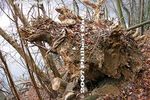
Tree keeled over.
|
|

Shiraiwa Waterfall. 白岩の滝
|
|

"Pine trees are very green, on sands very white." Omi-Maiko
|
|

Lake Okutama
|
|
|
|
|

It's actually a series of small waterfalls. Mt. Hinodeyama, Tokyo.
|
|

Pine tree and Ryotei
|
|

White sands of Omi-Maiko (Omatsu), Otsu, Shiga
|
|
|

Pine tree and Ryotei
|
|

Nature trail
|
|

Trail to Shiraiwa Waterfalls
|
|
|

Nature trail
|
|

Ripples lap white sands of Omi-Maiko.
|
|

Trail to Shiraiwa Waterfalls
|
|

Stone pagoda on island named Matsushima
|
|

Nature trail into bamboo forest.
|
|

Entrance to trail to Shiraiwa Waterfalls and Mt. Hinode-yama
|
|

Pine trees at Omi-Maiko
|
|

Kyoto University Rowing Club arrive at Omi-Maiko in Aug. 2006 during their annual Lake Biwa rowing trip.
|
|

Omatsu "Famous Place" marker
|
|

Street singer in front of JR Akihabara Station's new Central entrance
|
|

Street singer in front of JR Akihabara Station's new Central entrance. A cute face and miniskirt really help to gather a crowd.
|
|

Her setup is simple. A portable and battery-powered amplifier connected to a microphone. The amp is on a luggage cart. When the police comes, she can pack up and leave within 5 sec.
|
|

These girls usually have a lookout man who watches out for the cops. As soon as he sees one coming, he runs up to her and gives the "Outta here" signal. They're gone before the police can even see them. It's a constant cat and mouse game
|
|

She says that it was her first "Street live performance" (rojo raibu).
|
|
|

Street performer
|
|

Street performer near Yodobashi-Akiba, the largest store in Akihabara.
|
|

A miniskirted pair
|
|

Sign says "No street performances allowed."
|
|

Lakeside park
|
|

Tokyo Toden streetcar tracks near Arakawa 2-chome Station.
|
|

Tokyo Toden streetcar pass by cherry trees near Arakawa 2-chome Station.
|
|

Tokyo Toden streetcar at Arakawa 2-chome Station.
|
|

Inside Tokyo Toden streetcar.
|
|

Minabe boasts Japan's largest plum tree groves. The trees cover the mountain slopes and a sweet aroma prevails. JR Minabe Station
|
|
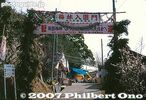
Entrance to Minabe Plum Grove. The best time is around mid-Feb. 南部梅林
|
|

Slopes covered with plum trees.
|
|
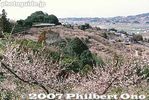
Plum blossoms
|
|
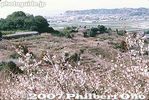
An awesome sight in Minabe, Wakayama.
|
|
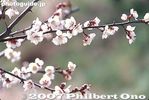
Plum blossoms
|
|
|
|
| 2085 files on 9 page(s) |
1 |
 |
 |
 |
 |
|